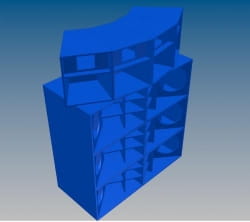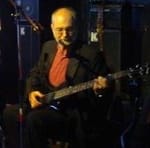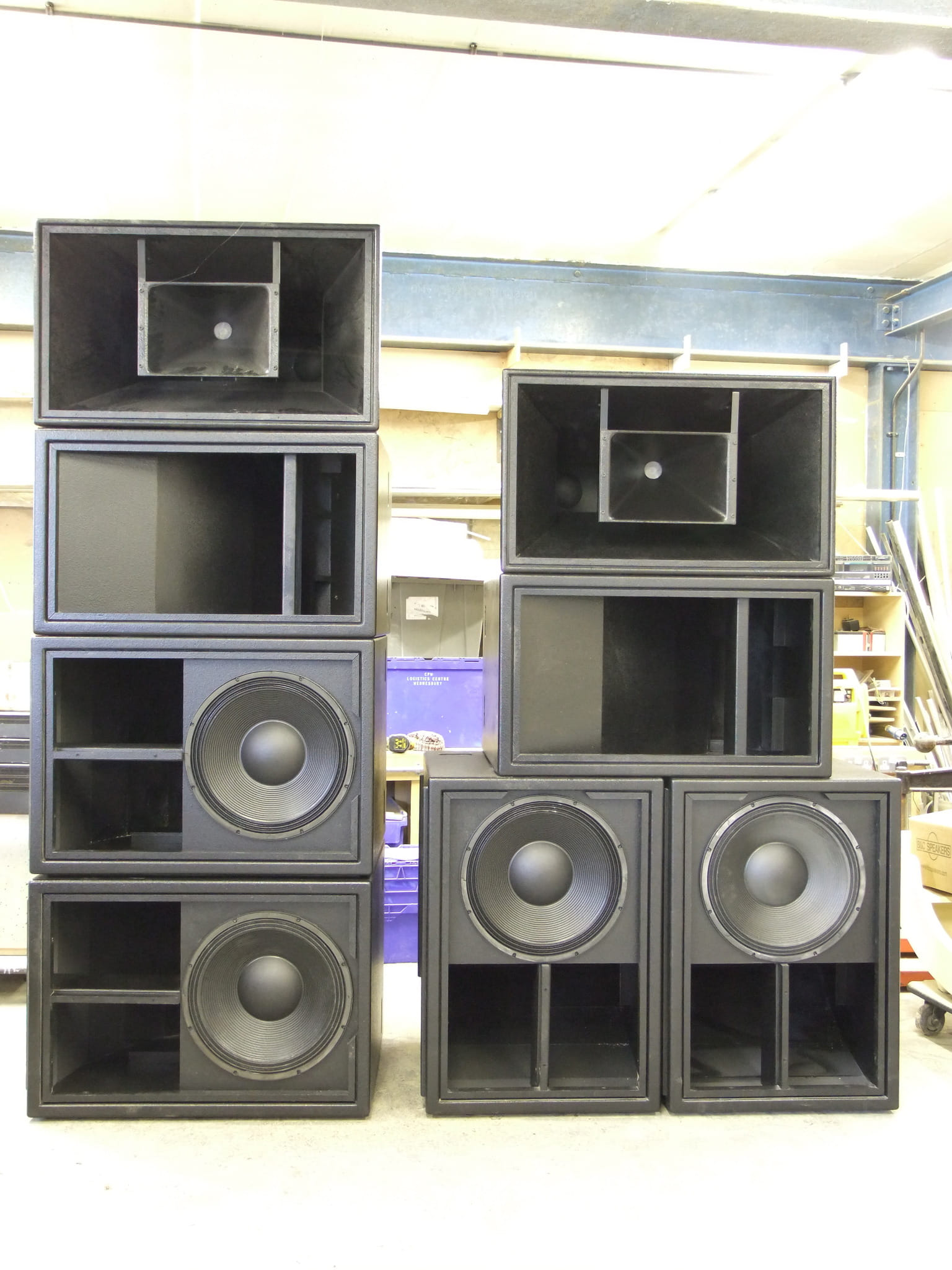- Posts: 2090
- Thank you received: 34
Unity Horns /Why they work / Potential Patent Challenges /
- bee
-

- Offline
- Platinum Member
-

Tony, i have a basic understanding of time alignment of speakers, but i have allways thought the speed of sound was constant at 344 miliseconds. if indeed differant freq work at differant speeds is 344 an average figure, or am i missing something...... Im allso aware that lower freq will travel further.... smiley29
If for example you had 8 midtop speakers pointing inward in a circle, the very centre is where you would want all the speakers to be aligned to. If you step off center then no longer is it aligned to the new point you stand at. If you now add 8 base cabs as well, then would need to add delay to the midtops because of the horn length on the base cabs, so you hear the base at the same time...... If my understanding is correct then the speed of sound constant..... smiley29 the bit im not getting is if sound is constant how can freq travel at differant speeds, very confused now. Or am i missing something....
Please Log in or Create an account to join the conversation.
- bee
-

- Offline
- Platinum Member
-

- Posts: 2090
- Thank you received: 34
Please Log in or Create an account to join the conversation.
- heathrow_b_line
-

- Offline
- Platinum Member
-

- Posts: 397
- Thank you received: 0
can you still buy the lamda unity horn?
Produce a killer sound. Take no prisoners.
Please Log in or Create an account to join the conversation.
- deadbeat
-

- Offline
- Platinum Member
-

As for driver recommendations - there's a rough spreadsheet calculator for that on diyaudio somewhere. I'll edit this the next time I come on with the link. There were some good stock drivers, but I can't remember them off the top of my head now.
Beranek\'s law
\'bits of ply round a driver\'
Please Log in or Create an account to join the conversation.
- bjm362
-
 Topic Author
Topic Author
- Offline
- Premium Member
-

- Posts: 142
- Thank you received: 5
Please Log in or Create an account to join the conversation.
- cilla.scope
-

- Offline
- New Member
-

- Posts: 13
- Thank you received: 0
One of the first things you learn studing the design of loudspeakers is that the speed of sound is NOT constant ! It varies accordinng to the DENSITY of the medium AND the FREQUENCY of the signal! Higher frequencies travel faster than low frequencies
Interestign concept .. but entirely wrong. If you can provide any *proper* evidence for that (eg an accepted paper from a respected scientific journal) I would be VERY interested to see it.
If what you claim is true, given that a typical note from say a violin which has considerable harmonic content, as you moved away from the instrument, the phaes relationship of the components would change (as the higher frequency harmonics would arrive at a different time to the fundamental) with distance ... this doesn't happen.
The speed of sound in air is affected by many things .. pressure, temerature, water content ... but, it is not frequency dependent, sorry.
Please Log in or Create an account to join the conversation.
- jonny4288
-

- Offline
- Senior Member
-

- Posts: 51
- Thank you received: 0
for example we can process 24 frames per second, if you look at a cars wheel travelling up the motorway it apears if its going backwards or not moving as it is rotating more than 24 times a second, another example if youj spin round on the spot you cannot process all of the detail you see.
This is just a theory based on both views of the discussion
Please Log in or Create an account to join the conversation.
- bjm362
-
 Topic Author
Topic Author
- Offline
- Premium Member
-

- Posts: 142
- Thank you received: 5
This is great forum IMHO, and we have a good discussion going here too!
As well as AND in spite of speaker design and speaker design theory are still as much an art as they are a science.
Thats part of the fun as well !
Ther are some excelent points of discussion brought up in the last few responses. I think I can adress them in a manner that wil also help my Bee (Bee seems like I really cool guy, I will be really glad if I can help him) get a better picture!
The comment about the difference being miniscule is correct! However they are NOT impercievable! The Human ear IS accurate enough to hear them and the brain both processes and filters them.
I am an old man, The point about the difference of the speed of sound by frequency was poroven before I was born. So much before I was born the I actually personaly witnessed an experiment retrace the proof in 8th grade science class!
The Hypothesis based on the evidence was that the larger waves travel a greater distance to the same point in space.
What we have left out thus far is that phase changes by distance don't just occur in loudspeakers. The are a natural aspect of sound.If your initial point source is correctly aligned the alignment and cancellations will be different at 30 feet,but it will be correct for the content at that distance.
I am really pleased that the violin and its rich harmonic content was mentioned.This helps in discussing the phase cancelation as it occurs in nature.
If you attempt to record a bugler at a distance of 100 yards, you will not have as great of difficulty as making the same recording at the same distance with a violin.
The Bugle functions in a much narrower band, and has les content loss at that distance.
Excelent discussion everyone, You guys are great !!!!
Please Log in or Create an account to join the conversation.
- bee
-

- Offline
- Platinum Member
-

- Posts: 2090
- Thank you received: 34
Please Log in or Create an account to join the conversation.
- tony.a.s.s.
-

- Offline
- Moderator
-

- Posts: 1344
- Thank you received: 12
Peace and goodwill to all speaker builders
Please Log in or Create an account to join the conversation.